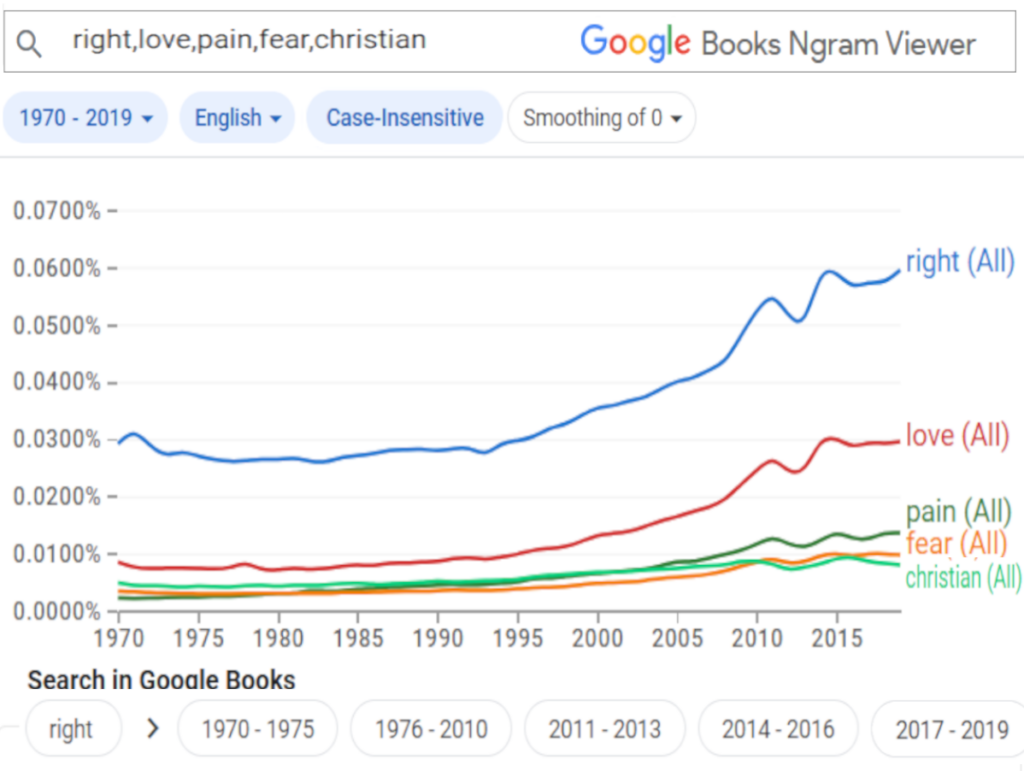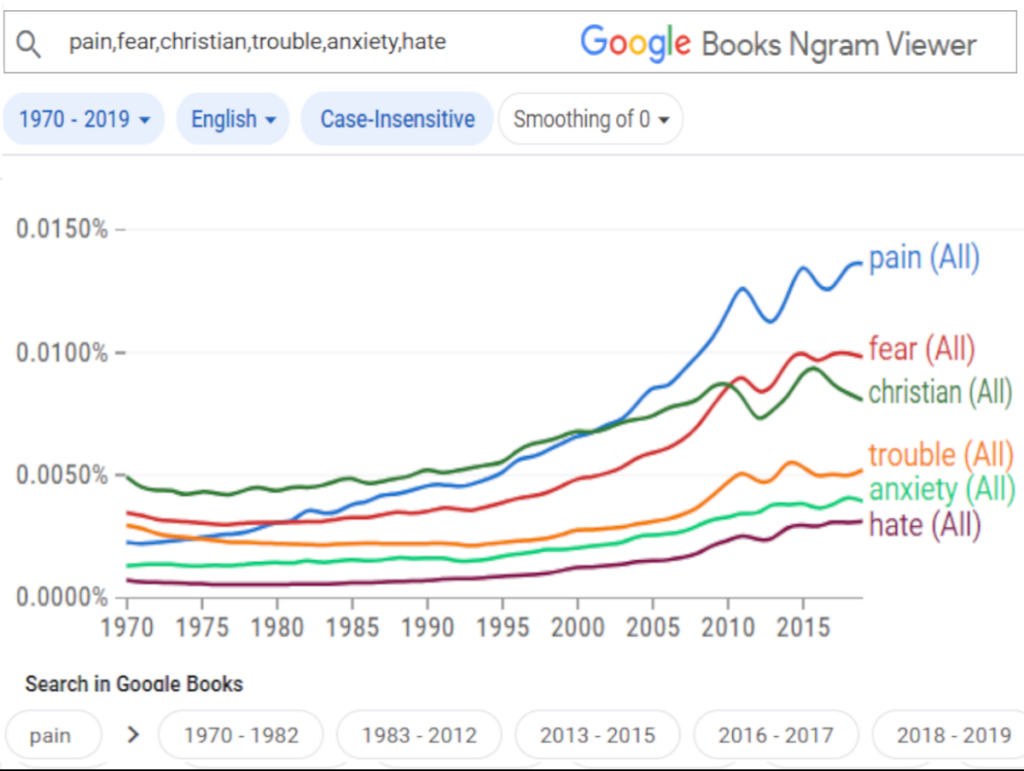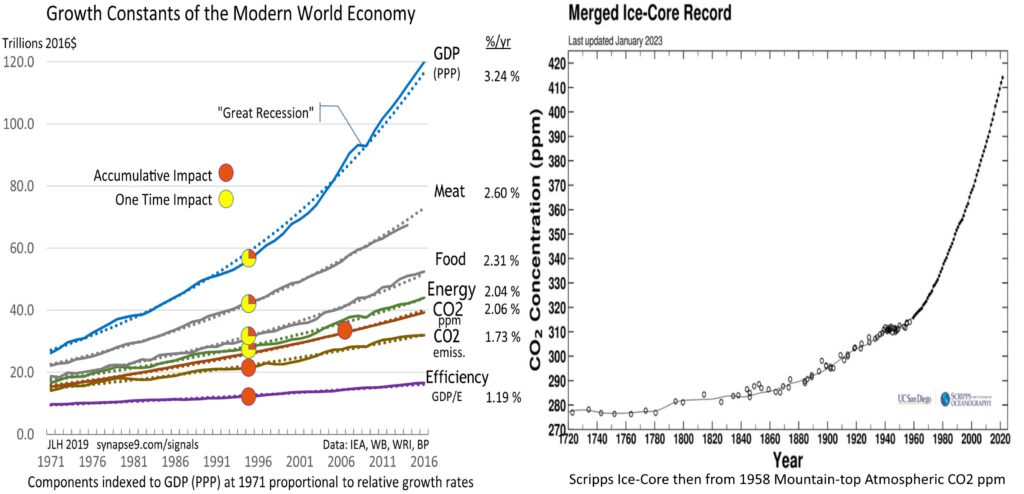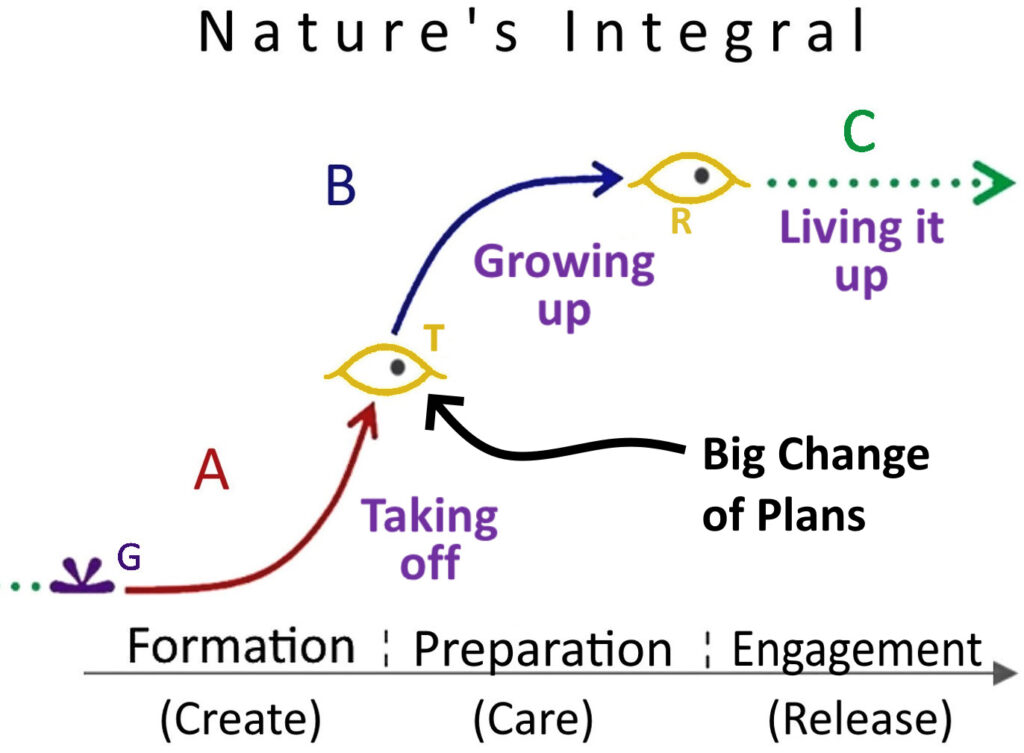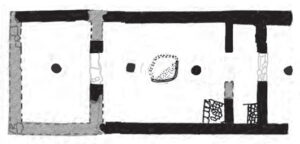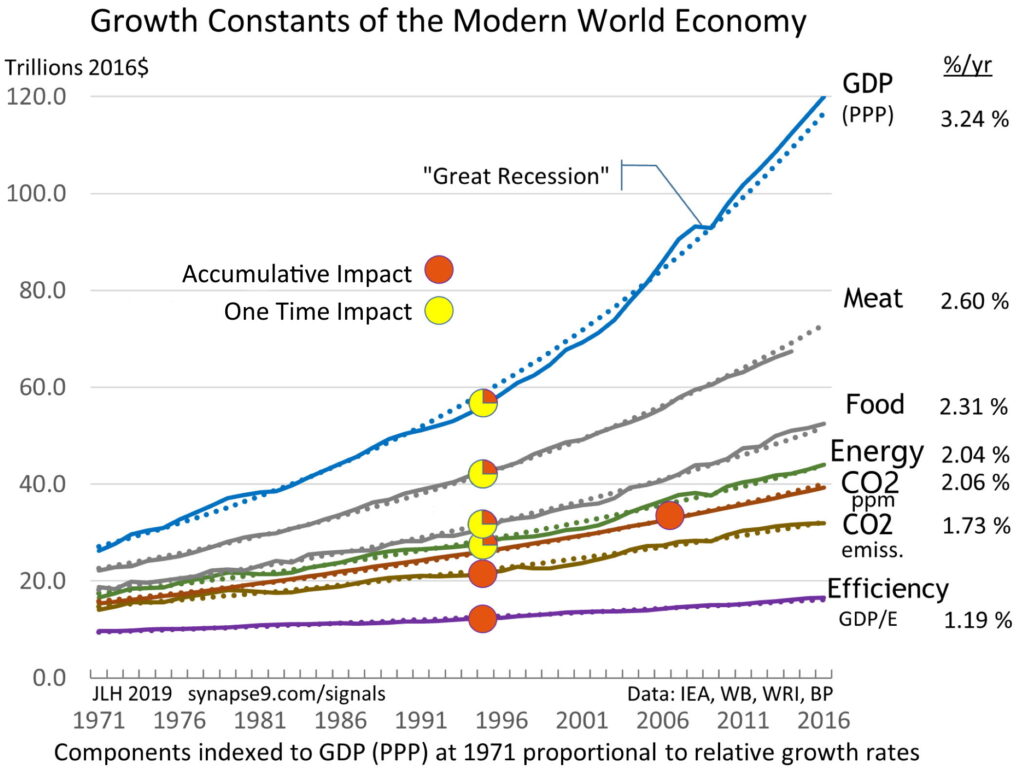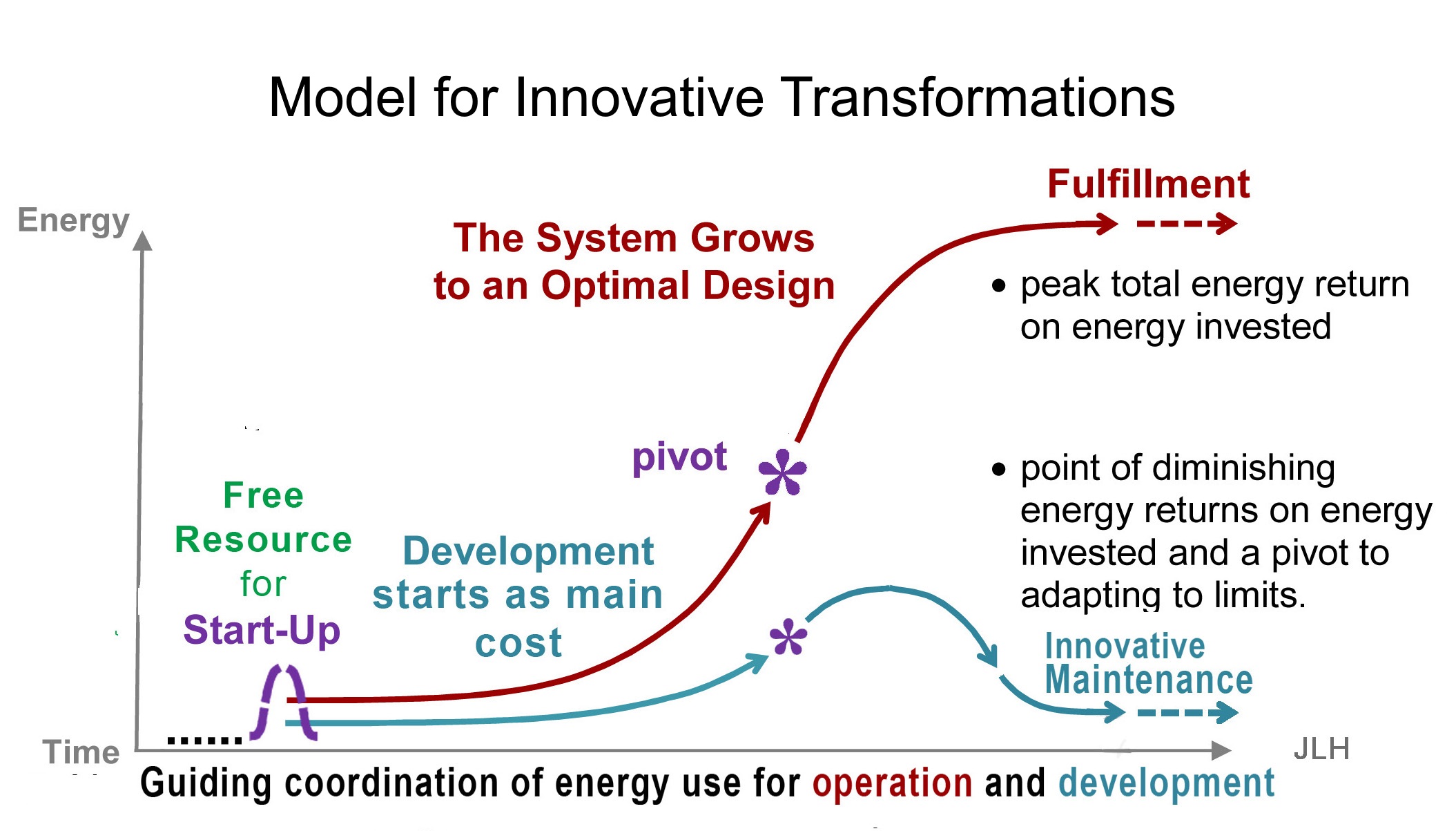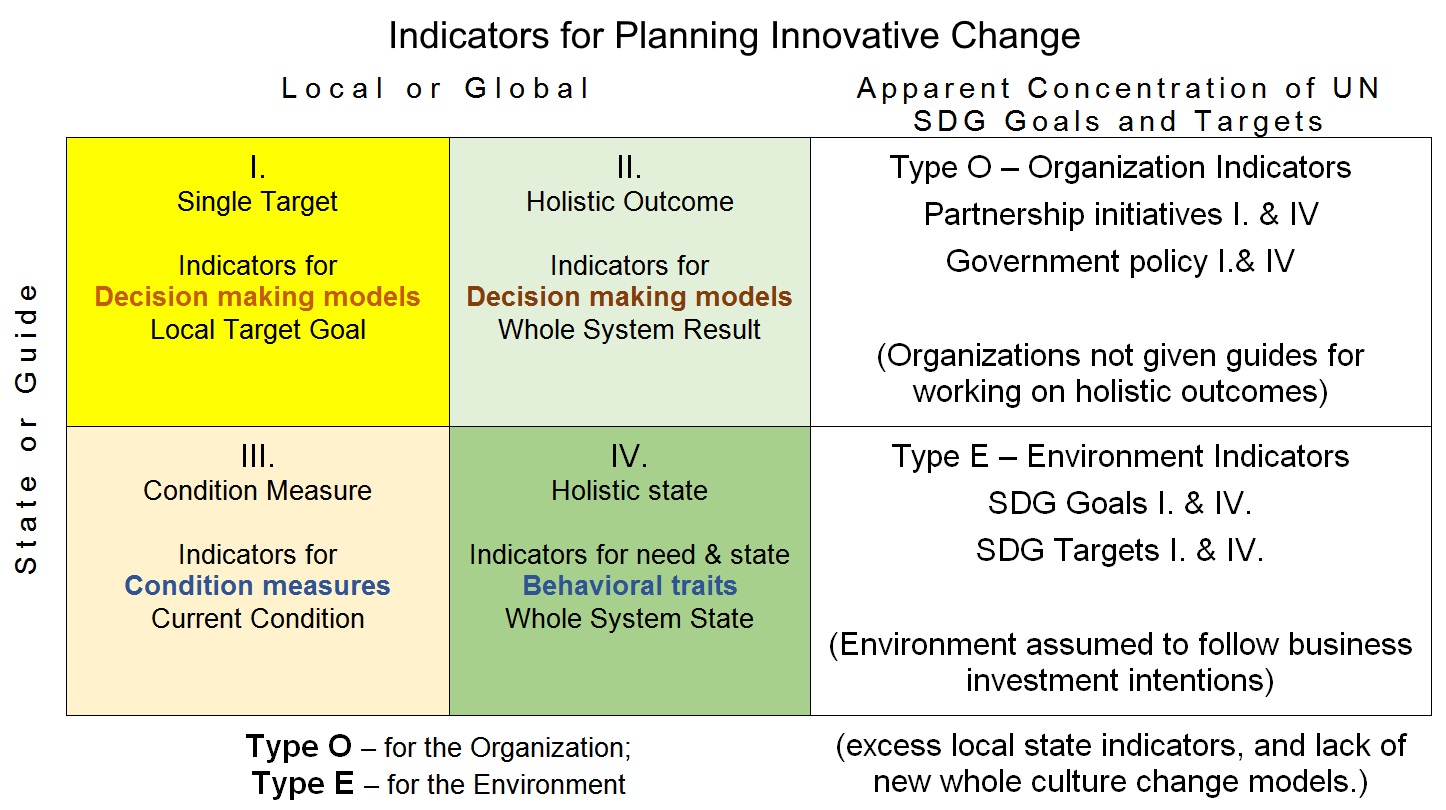While there are an amazing variety of answers to that today, the one I gravitate to is that the question is very meaningful to everyone. We all have a clear understanding of what the words “happen” and “happening” mean. We know they have to do with the changing “organization” of things that “matter” to us. Some may not realize it, but there are no comparable scientific definitions for those deeply meaningful parts of life.
You could ask your favorite web chat sites, TwitterX or Bluesky , your search sites, like Google, Duck Duck Go, Bing, Yahoo, Internet Archive or your AI wizards like Gemini, ChatGPT, or knowledge bases. Try asking a) or b):
a) The most serious issue: “How can our world escape the apparent doom cycle we’re in of ever-escalating mistakes and tragedy, destabilizing our societies and the whole living environment.”
b) The more open:
“What is really happening to us?”
In your search, are you finding anything about what’s happening to us as occurring naturally or happening to all other kinds of growth systems, too? The truth is people all naturally know a WHOLE lot about “what’s happening” that science is unable to detect or describe, as happening is natural.
There is a simple scientific reason. It’s that human knowledge develops from experience in the living contests of growth and change as part of nature. Science searches for perpetual and unchanging truths that can be stripped of context in order to define answers with measurable, absolute certainty.
Life is lively, though, and nature created organisms to become highly skilled in negotiating the often rapidly changing worlds around them. So humans are quite an exception in finding ourselves unable to respond to growing crises like climate change, economic overshoot, societal conflict, and ecological catastrophe.
What I use is a practice anyone can use to improve their observations of what’s happening and find where the changes come from. It starts with learning to *feel the rates of change.* It’s very often what we react to, something coming on slowly, quickly, or suddenly. It may be feeling it in your gut, in your throat, in your eyes, or in other ways, sensing a need to respond to signals of change in relationships that matter.
With practice, one can learn to mentally trace those feelings to the specific things one is responding to well enough to tell what else is connected. The rates of change are key. They tell you whether it’s a 1) steady change, 2) accelerating, 3) a growing system, or a 4) fluctuating pattern.
Those shapes of change over time can be used to find and connect with other parts of it since **change is a system, and all its linked parts tend to move together** as for economic growth, as shown below. Notice how constant the growth rates are. They trace nature’s most radical process of developing new systems, which may then tear them apart. So.. “Good question.”

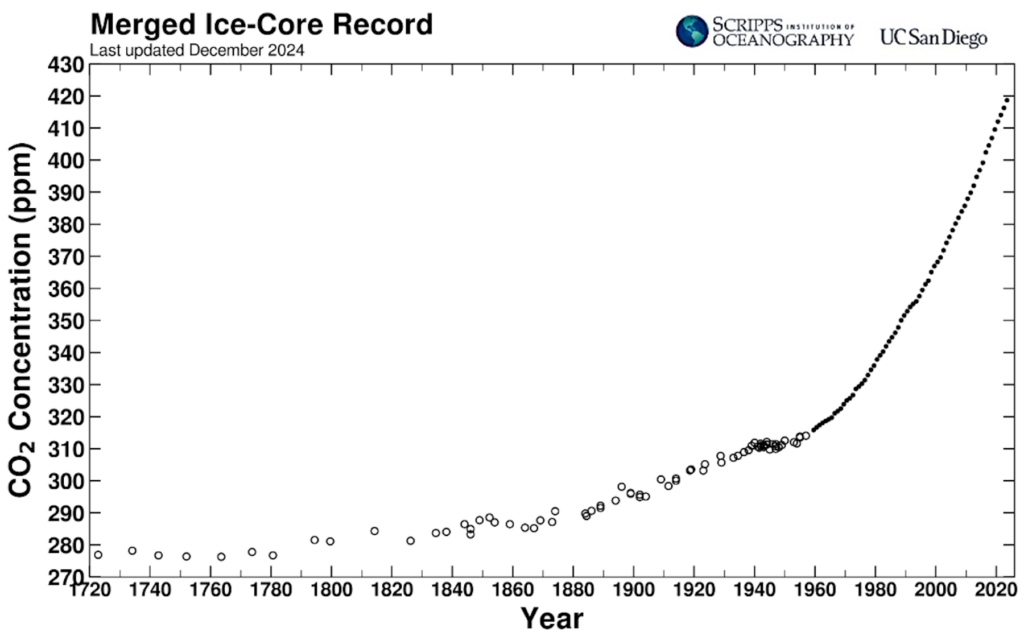
The general shape of all these stable concentric curves (having the same exponential origin) is that some of the subsystems are changing slower, but they’re all changing at what has become an explosive rate relative to what’s manageable on Earth, rearranging the earth ever faster than anyone thought possible. That appears to be why we don’t know what to do.
So, my casual research practice (before a long-term study, perhaps) starts with noticing something and seeing what’s happening around it. That’s how you find what’s moving in the same way, implying the organization of the system connects them. That’s very helpful, as with personal relationships, so that you can find and respond to the right things.
Societal relationships show similar diverging coupled rates of change as the economy. With societal changes, we are much more aware of the resulting disruptive crises of conflict in relationships, as those are where we live our lives. The reason is that change in everything is being accelerated to its limits of breakdown or misbehavior. It pushes every system to the threshold of it breaking apart. Yikes…
As these changes are at different paces and raising different unfamiliar complications for everyone, we even find the people pushing this endless radical rearrangement of the world (mostly using the financial system) being quite blind to their contexts and the fragility of living systems pushed to reorganize ever faster.
From my long-term studies of it, all of what’s happening to us is ‘natural’, if also rather negligent given the failure to successfully respond. Growth is a system of compound accelerating change that invariably creates a crisis for itself. You might say nature uses it for blowing up new designs for life to see if they’ll respond by stabilizing their designs before growth rips them apart, or not.
Some growth systems tip from multiplying to unifying and maturing very early in their growth – to have a long rich life… and others tip rather late on miss that turn all together, breaking up their relationships. It’s nature’s test for living systems, choosing between emerging lives growing up and falling apart, for life, a choice.
Not noticing this quite pervasive pattern, I think, is why the modern world missed how dramatically climate change would intrude on our lives, leaving us now without a real clue as to what to do about it. I’ve been studying that kind of mysterious discrepancy between native and scientific languages for some time. Native languages have all kinds of ways to alert people to unstable change, but as that comes from feeling what’s happening, science, business, finance, government, the academy, all can’t translate it into what to do. In this case the main flaw in science causing it to not know what to do seems to be it had no practice of surveying what is going on in the contexts of the rules science and economics use, completely blind to the natural relationships the resulting activity of using the profitable rules to steer the planet.
That we’re all in this together is still the great observation.
It lets you realize that what just happened to politics in the US and around the world is part of a common struggle to hold societies together, pushed to the dangerous limit of seeing no way forward than – by breaking things. The desperate actors apparently do not realize it’s all our also common efforts to seek ever faster change (by compound investment multiplying solutions and then hidden problems they create) that’s the principle source of all great threats.
Jan 2, 2025
The rest of the article is on my research site as Whats-really-happening-to-us Below is a list of the related research reports I chose to give http://bit.ly links to:
- A Clear Natural Signal for Moving Investment to Whole System Care
Bit.ly/WarningGrowthOfSocietalDesperation - Top 100 World Crises Growing with growth
https://synapse9.com/_r3ref/100CrisesTable.pdf
or https://bit.ly/TopCrises - 2011 paper Whole systems energy assessment.
https://bit.ly/WholeSystemImpactAssessment - Warning Growth Of Societal Desperation
https://bit.ly/WarningGrowthOfSocietalDesperatio
https://bit.ly/WarningOfGrowingDesperation - Elected under false pretenses
https://bit.ly/ElectedUnderFalsePretenses - Cults that threaten
https://bit.ly/CultsThreatenThoseBlindToThem - Etymology of ‘Cult’
https://bit.ly/EtymologyOfCult - Google Ngram of cult emergence
https://bit.ly/GoogleNgramOfChristNatEmergence - What cult are we
https://bit.ly/WhatCultWeDo - The genome of language
https://bit.ly/GenomeOfOurLanguage - Three Civ’s down one to go
https://bit.ly/4g7TC52 - LinkedIn – Words linking (&separating) minds and nature
https://bit.ly/3SygvV8 - LinkedIn – a rather strange feeling
https://bit.ly/4f9LIYt - LinkedIn – Whoa there!
https://bit.ly/3ztQtfc - JLH ISSS wiki
https://bit.ly/3WcWaqM - LinkedIn – Are we blinded buy search for theory?
https://bit.ly/3Vo8KBP - Keynes’ Ch 16, on the limits of growth and what to do
https://bit.ly/4bBdquV - Post growth plans need nature’s way of getting there
https://bit.ly/4bxRCAf - Markus Feldthus on Post Growth Plans
https://bit.ly/44VNojB - Post Growth Needs Nature’s Plan
https://bit.ly/3WPf2Nf - Three steps higher to real sustainability
https://bit.ly/44MaLvK - A long chain of collapse
https://bit.ly/3ylTBJu - Growth constant fingerprints of 1780
https://bit.ly/3JmQFi4 - AMOC Oceanography
https://bit.ly/3xve0v1 - Changes that work &what we miss
https://bit.ly/4318nR2 - LinkedIn – Cautiously watch signs of collapse
https://bit.ly/3SYk46z - 2023 ISSS – System self-organization & self-control
https://bit.ly/3UZpqRx - Feb 2024 World change slides
https://bit.ly/3TgkhDc - Donate JLH
https://bit.ly/49EUwCg - Fall of Rome search
https://bit.ly/48vg9nr - Greek Dark Age search (Atlantis)
https://bit.ly/3TffZwc - Dark Ages Search
https://bit.ly/3OVuUZz - LinkedIn- Might AI effect RI (real intelligence)
https://bit.ly/49jg5YW - LinkedIn – nature heals
https://bit.ly/42eSqq0 - Scripps CO2
https://bit.ly/4aF0fci - LinkedIn – How systems steer
https://bit.ly/3RJHFqZ - YouTube – Blindness to things that matter
https://bit.ly/3trJnok - YouTube – What observation naturally cannot see
https://bit.ly/3JpdzFV - Notes on context blindness
https://bit.ly/3NpBWpl
___________________________________
02 JUNE 2023

